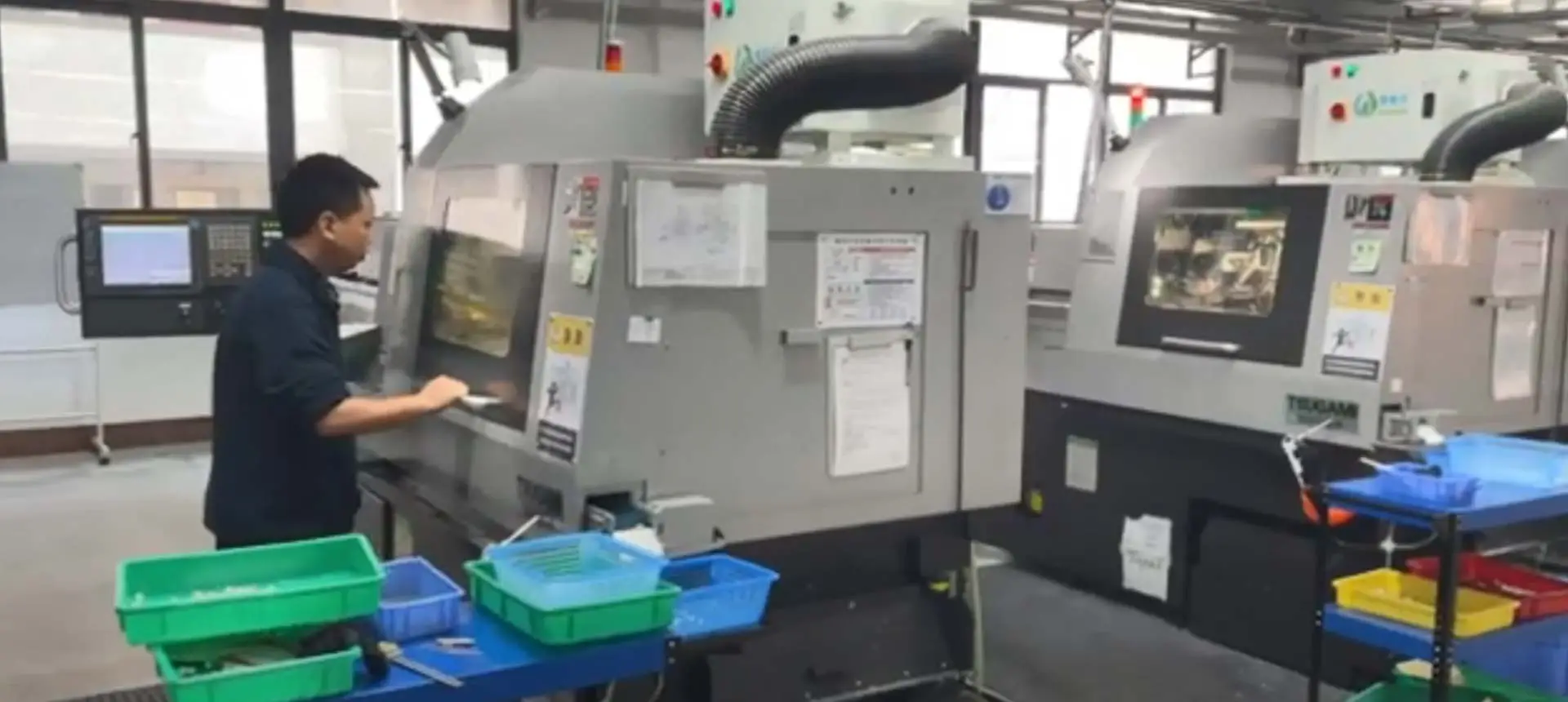
Inspection matérielle: Le processus de contrôle de qualité commence par l'inspection des matières premières entrantes. Les matériaux utilisés pour les douilles/manchons doivent répondre aux normes et exigences spécifiées. Les méthodes d'essai des matériaux peuvent inclure l'analyse de la composition chimique, les tests de dureté et la vérification dimensionnelle.
Précision dimensionnelle: les douilles/manchons doivent avoir des dimensions précises pour assurer un ajustement et une fonctionnalité appropriés. Les mesures de contrôle de la qualité impliquent des inspections dimensionnelles à l'aide d'outils et d'équipements calibrés, tels que des étriers, des micromètres et des jauges, pour vérifier les diamètres intérieur et extérieur, la longueur et l'épaisseur de la paroi.
Qualité de surface: La finition de surface des douilles/manchons est essentielle pour un fonctionnement en douceur et une friction réduite. Les contrôles de qualité impliquent une inspection visuelle des surfaces pour des défauts tels que des bavures, des rayures ou des irrégularités. Des mesures de rugosité de surface peuvent également être effectuées à l'aide d'outils tels que des profilomètres.
Vérification de la tolérance: les douilles/manchons ont des tolérances spécifiques qui définissent les variations acceptables des dimensions. Les procédures de contrôle de la qualité impliquent de vérifier les composants fabriqués par rapport à ces tolérances pour s'assurer qu'ils respectent les limites spécifiées.
Propriétés mécaniques: Selon les exigences de l'application, certaines propriétés mécaniques des coussinets/manchons, telles que la dureté, la résistance à la traction et l'allongement, doivent être évaluées. Ces propriétés peuvent être évaluées par des méthodes de test standardisées, y compris des tests de dureté (par exemple, Rockwell ou Brinell) et des tests de traction.
Matériel | Fer, acier inoxydable, laiton, cuivre, acier galvanisé, titane, aluminium, etc. |
Traitement de surface | Zinc/Nickel/Étin/Plaqué Ag/Plaqué, etc. |
Type | Pièces non standard de haute précision (Service d'OEM) |
Processus | Estampage/poinçonnage/pressage, usinage CNC/tournage/fraisage, étirage profond et autres processus. |
Certificat | IATF16949 2016;I SO9001 2015; ISO14001:2015;RoHS & REACH, etc. |
Utilisation | Thermostat automobile/voiture, commutateur, chauffage électrique, aérospatiale, nouvelle énergie, etc. |
Les bagues, également appelées manchons, sont des composants cylindriques utilisés dans diverses applications pour fournir un support, réduire les frottements et absorber les chocs ou les vibrations. Les caractéristiques spécifiques du produit des douilles/manchons peuvent varier en fonction de l'utilisation prévue et des matériaux dont ils sont fabriqués.
Résistance à l'usure:Les bagues/manchons peuvent avoir des caractéristiques spécifiques pour améliorer leur résistance à l'usure, en particulier dans les applications à haute charge ou à grande vitesse. Ces caractéristiques peuvent inclure des revêtements de surface spéciaux, un traitement thermique ou l'utilisation de matériaux aux propriétés inhérentes de résistance à l'usure.
Amortissement et absorption des chocs:Certains coussinets/manchons sont conçus pour absorber les chocs ou les vibrations, réduisant ainsi la transmission des forces d'impact. Ils peuvent avoir des propriétés telles qu'une élasticité élevée, une flexibilité ou la capacité de se déformer sous charge, offrant des caractéristiques d'amortissement.
Résistance à la corrosion:Selon l'application et l'environnement d'exploitation, les coussinets/manchons peuvent nécessiter des propriétés de résistance à la corrosion. Ceci est particulièrement important lorsqu'il est exposé à l'humidité, aux produits chimiques ou aux températures extrêmes. Choisir le matériau approprié ou appliquer des revêtements protecteurs peut améliorer la résistance à la corrosion des bagues.
Application-Caractéristiques spécifiques:Certains coussinets/manchons peuvent avoir des fonctionnalités supplémentaires spécifiques à certaines applications. Par exemple, les bagues à brides ont une bride intégrée qui offre une stabilité supplémentaire ou des points de montage.
Lors de la sélection des douilles/manchons, tenez compte des exigences spécifiques de votre application, telles que la capacité de charge, la vitesse, les conditions de fonctionnement et les facteurs environnementaux. Comprendre les caractéristiques du produit et son adéquation à l'usage auquel vous êtes destiné vous aidera à assurer une performance et une longévité optimales.
Les bagues sont de simples composants cylindriques conçus pour réduire le frottement entre un arbre et des structures externes, fournissant un soutien et un guidage. Généralement trouvés dans les meubles, les systèmes de suspension automobile, etc., ils sont conçus pour la simplicité et peuvent être solides ou comportent des rainures de lubrification intégrées pour réduire la friction et améliorer la durabilité.

Les roulements, en revanche, sont des composants mécaniques plus complexes avec des éléments roulants tels que des billes ou des rouleaux. Ils réduisent les frottements, offrent une plus grande capacité de charge et fournissent un support de haute précision. Largement utilisé dans les moteurs, les moteurs, les essieux de roue, etc., les roulements sont disponibles dans différentes conceptions pour répondre aux exigences des applications à grande vitesse et à forte charge. En tant que fournisseur de fabrication de matériel, HHC se consacre à fournir des coussinets et des roulements de haute qualité pour répondre aux divers besoins de conception et d'application dans différentes industries, contribuant au développement dans divers domaines.
Une bague est un composant critique qui réduit le frottement entre un arbre et des structures externes, et ses performances sont déterminées par les matériaux choisis. Voici un guide sur les types de matériaux de bague et les techniques de traitement appropriées pour chacun:

Laiton:
Caractéristiques: ExhIbits bonne conductivité thermique et résistance à la corrosion.
Techniques de traitement: Le laiton est généralement traité à l'aide de techniques mécaniques telles que le tournage, le fraisage et le forage pour obtenir les formes et les dimensions souhaitées.
Bronze:
Caractéristiques: Possède une dureté et une résistance à l'usure plus élevées.
Techniques de traitement: Le bronze est souvent traité par moulage de précision, extrusion à froid ou d'autres techniques pour fabriquer des coussinets de forme complexe.
Polymères:
Caractéristiques: Connu pour l'auto-lubrification et la résistance à la corrosion.
Techniques de traitement: Les bagues polymères sont généralement fabriquées par moulage par injection, où le polymère fondu est injecté dans des moules pour former les formes souhaitées.

Revêtements métalliques:
Caractéristiques: Fournit une résistance à l'usure et une résistance supérieures.
Techniques de traitement: Les bagues en acier sont souvent revêtues en utilisant des procédés tels que la galvanisation à chaud ou la galvanoplastie pour obtenir un revêtement métallique protecteur sur la surface.


